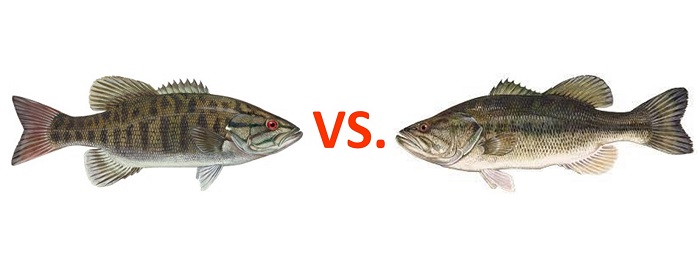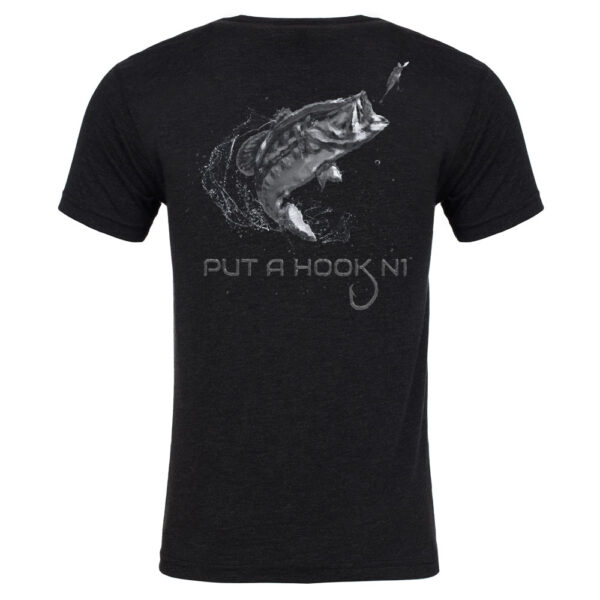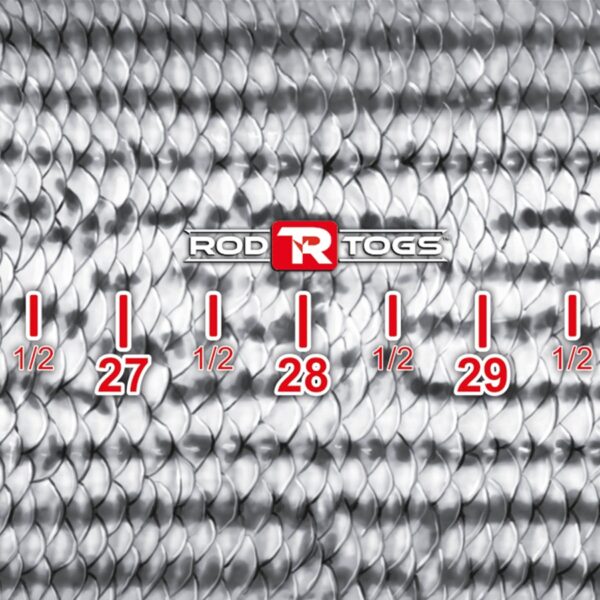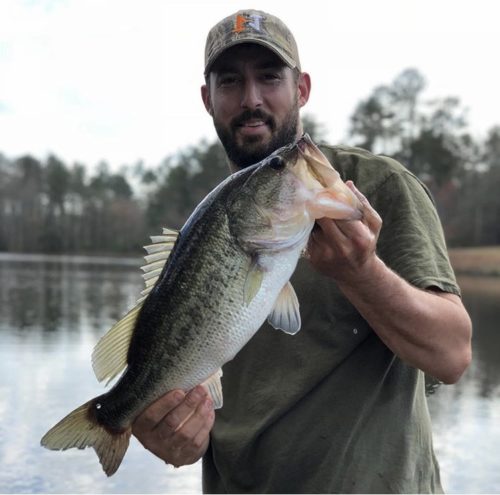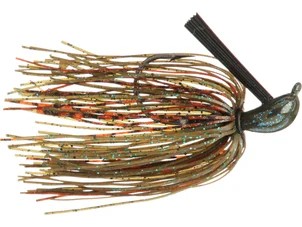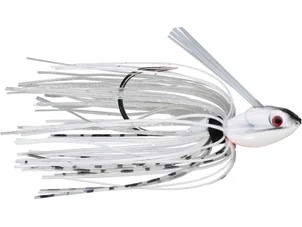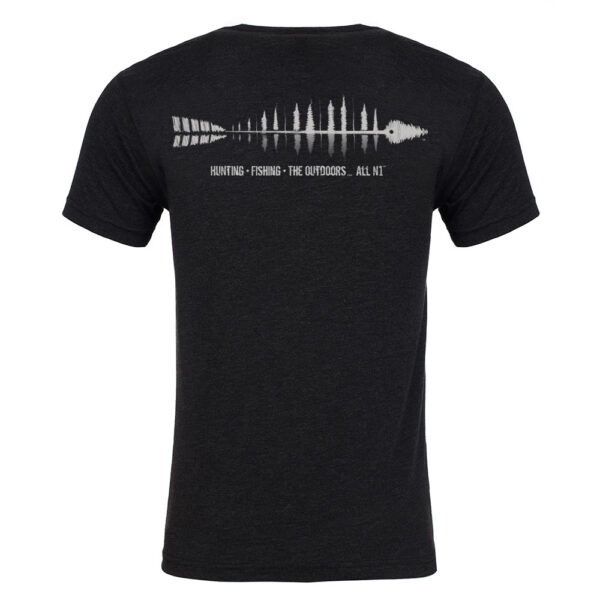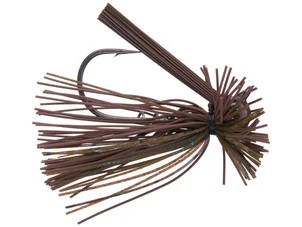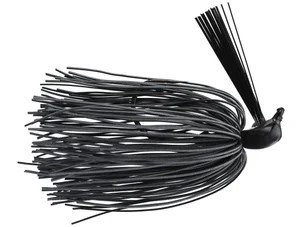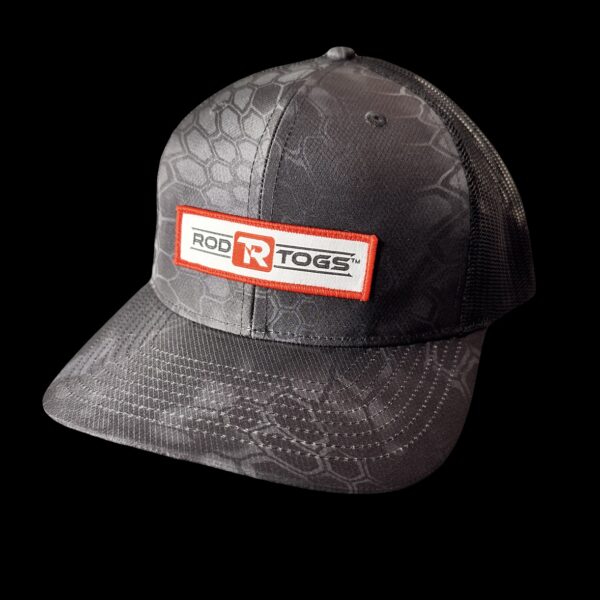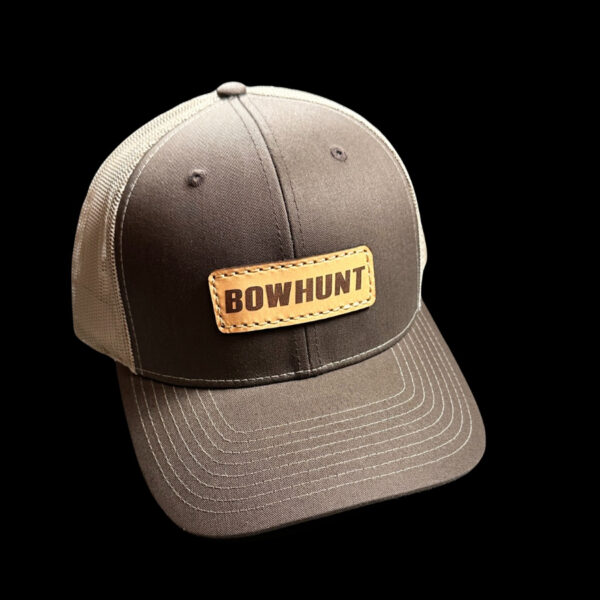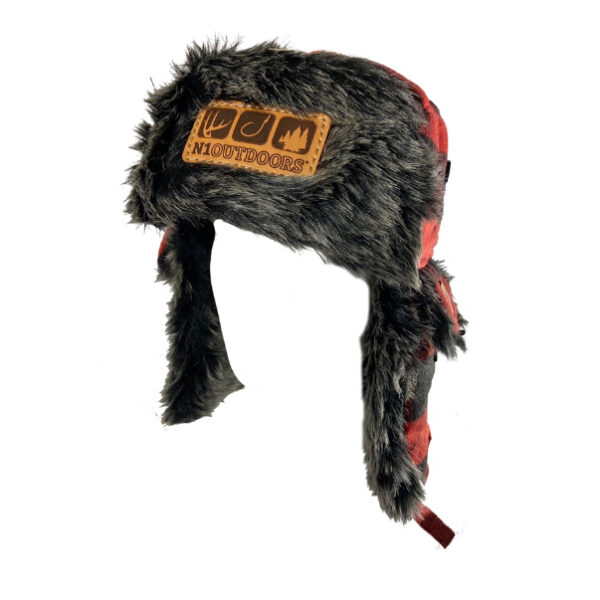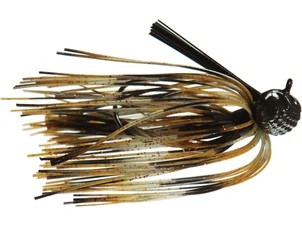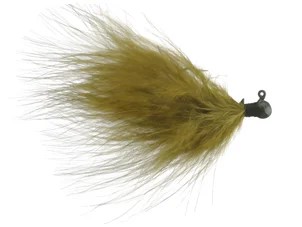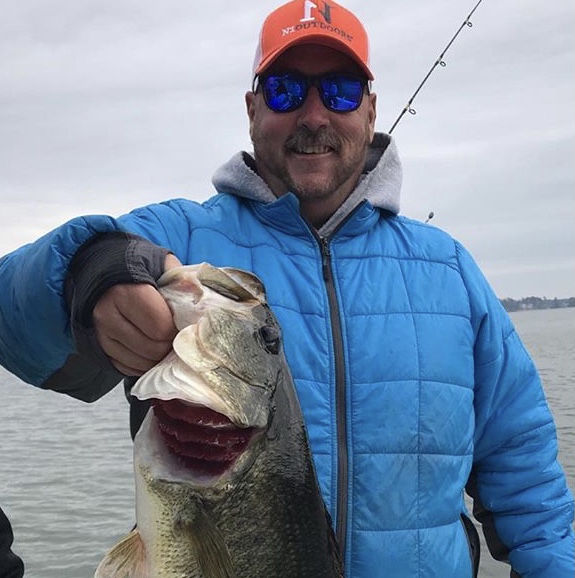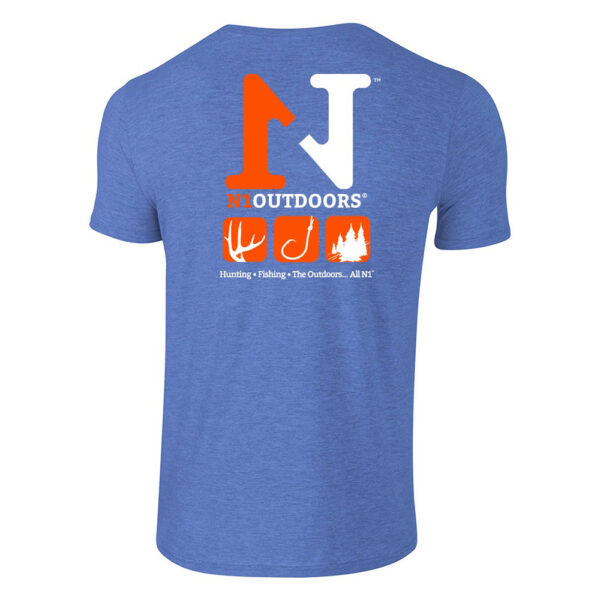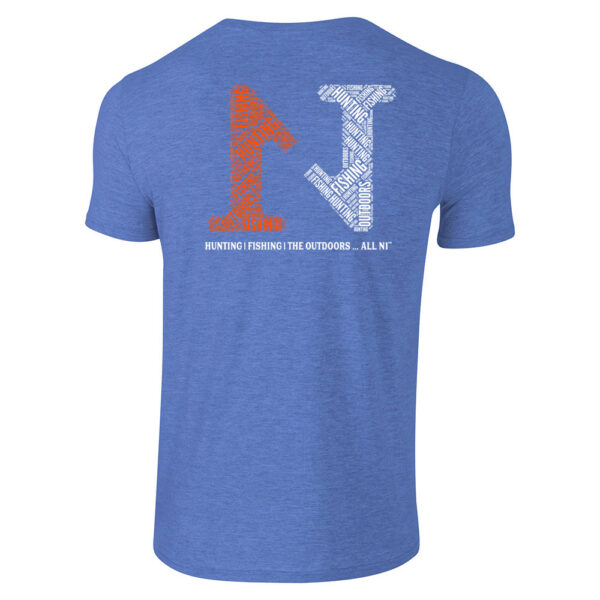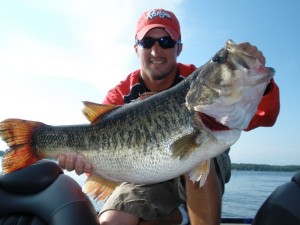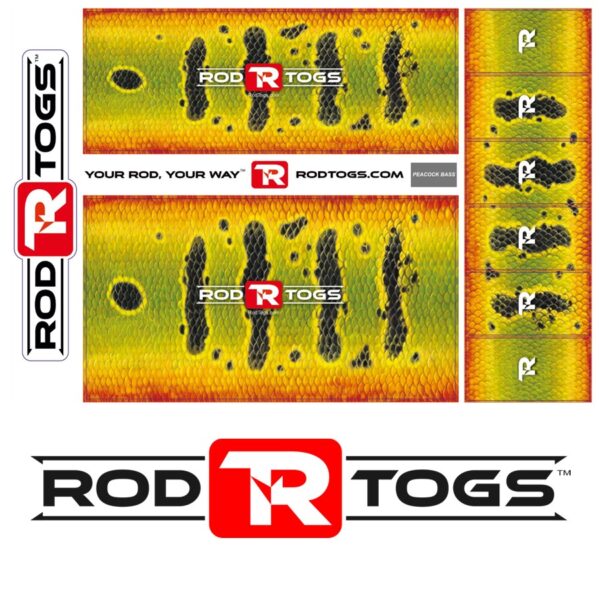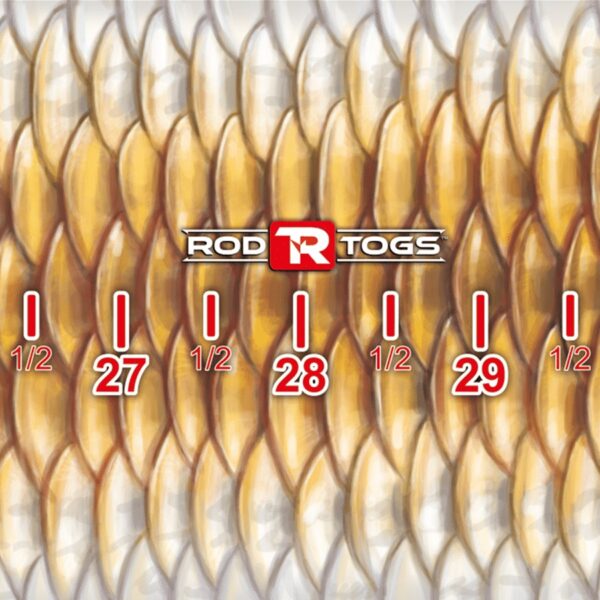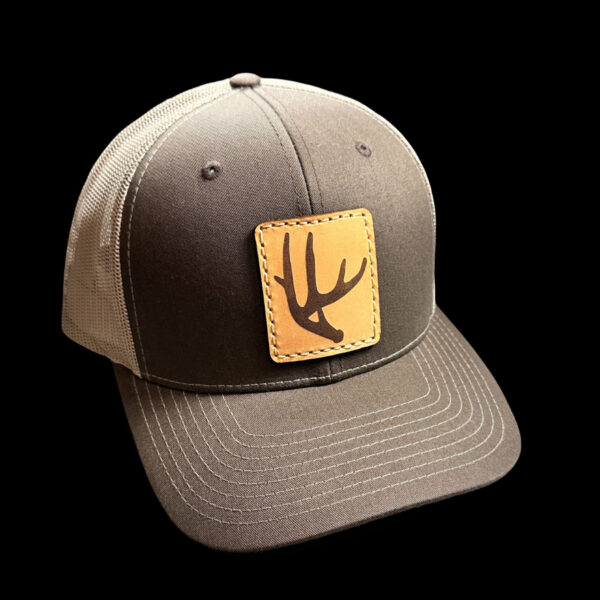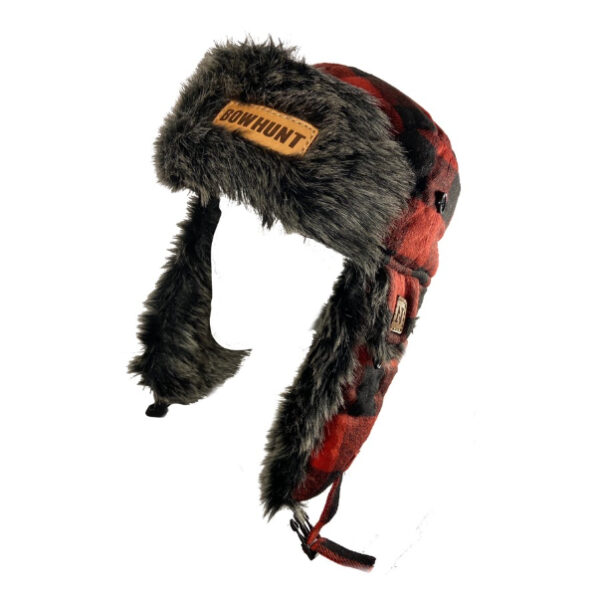In the United States especially, but abroad as well, largemouth and smallmouth are the two most popular bass subspecies.
If you are a bass angler, it is super important to know the differences between these two fish in order to increase your chances of hooking up with a monster.
We will be laying out everything you need to know about smallmouth and largemouth so you can differentiate between the two. We’ll cover physical distinctions, feeding patterns, popular habitats, and more!
Physical Distinctions between smallmouth bass and largemouth bass
So, what’s the difference between a smallmouth bass and a largemouth bass?
Whether you’ve already caught one of these fish and are wondering how to tell which one it is, or you’re just trying to learn the difference between the two so you can target one or the other, there are some obvious signs you should know to look for.
Largemouth Bass Attributes
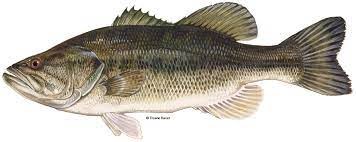
- Larger mouth that has an upper jaw extending past the eyes
- The bigger largemouth will be larger than a big smallmouth
- There is a break between the dorsal fins
- Spotted horizontal line that is usually black or of a dark contrast to the green body
Smallmouth Bass Attributes
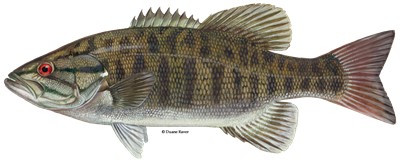
- Smaller mouth that does not open as wide
- Different colorations that focus on more browns and greens
- Even a very big smallmouth will be much smaller than big largemouth
- Vertical lines that are more subtle against the body’s coloration
Knowing these characteristics of both fish will help you learn about the species and know exactly what you are targeting. Although these attributes might be hard to view in the water from shore or a boat, the biggest thing you can look for is that lateral line made of black horizontal patterns on largemouth. This is the most clear sign you have a largemouth near you.
-
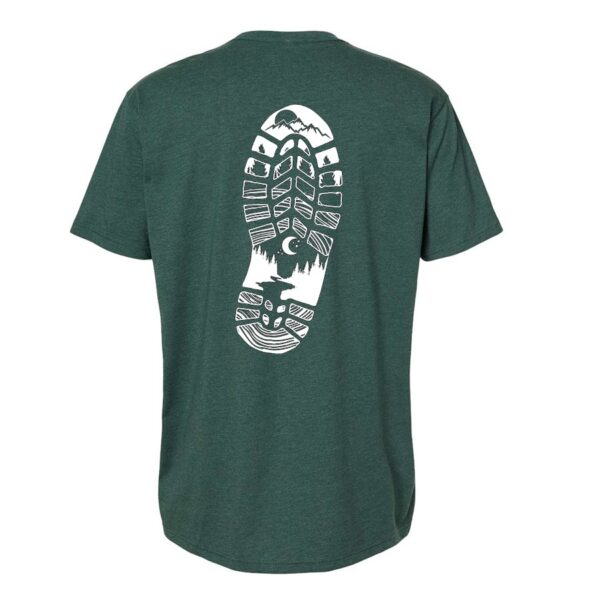
N1 Outdoors® “Outdoor Npressions™” Boot Print Tee
Price range: $24.99 through $28.99 Select options This product has multiple variants. The options may be chosen on the product page -
Sale!
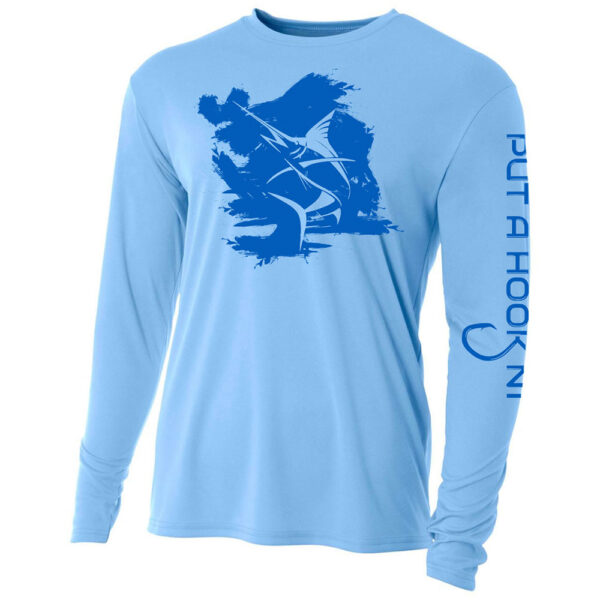
Put a Hook N1™ UPF30 Marlin Performance Fishing Shirt (Lt Blue)
Original price was: $34.99.$9.00Current price is: $9.00. Select options This product has multiple variants. The options may be chosen on the product page -
Sale!
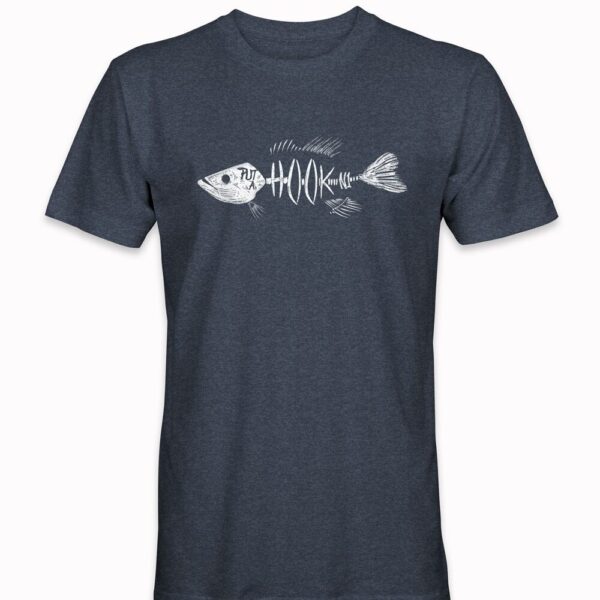
Put A Hook N1™ Fish Skeleton Tee
$5.00 Select options This product has multiple variants. The options may be chosen on the product page
Feeding Patterns
Knowing how any fish tends to feed will put you one step closer to getting that bite of a lifetime. This way, you can cater presentations that best resemble what they eat naturally. The old saying “match the hatch” could not be more true. This means to craft presentations and lures that best match what the natural food source is.
Best Lures for Largemouth
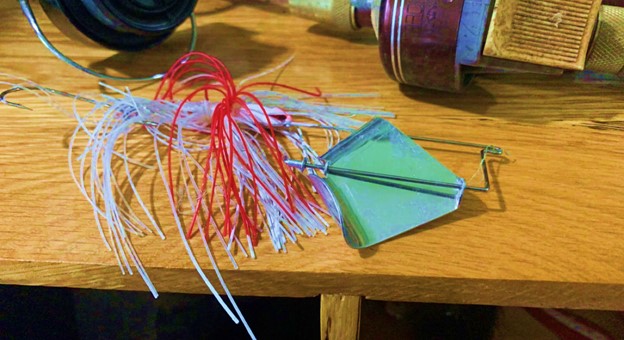
Photo Credit: Drew Pierce
Some of the best lures for largemouth include jigs, swimbaits, crankbaits, and spinnerbaits. All of these have certain action components that may work for both largemouth and smallmouth, but lean toward the former a touch more. You can also take a more finessed approach and use soft plastics to provide a really accurate presentation.
Best Lures for Smallmouth
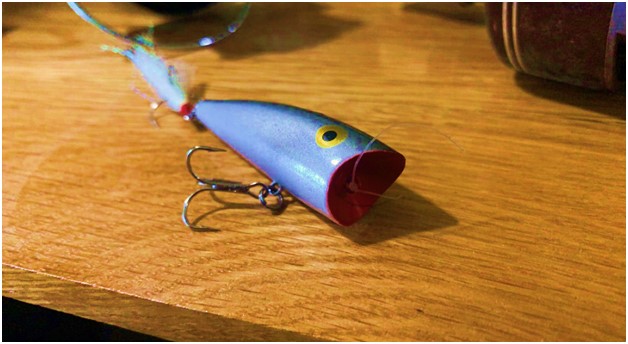
Photo Credit: Drew Pierce
Smallmouth can be quite aggressive and offer a great fight, so there are a few presentations we recommend for them. Examples include tubes, craws, jerkbaits, poppers, and crankbaits. Many of these are reactionary and better represent what smallmouth eat naturally.

There is a fair bit of crossover in baits between these two subspecies of bass, but there are specifications to make in order to yield the best results possible.
Also keep in mind the habitats in which the fish reside. If you are in super clear water, apt for more natural or blue/green colors. If the water is like chocolate milk, you will want blacks and blues to provide a good contrast. So, a big part of lure selection and reading feeding patterns revolves around your surroundings and situations.
Habitats
Knowing where to find largemouth and smallmouth is super important no matter which one you are targeting. This way, you can specify your presentation to target a certain fish in a certain spot.
Largemouth Habitats
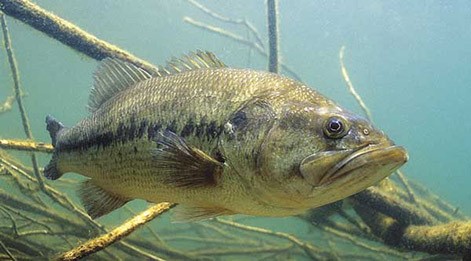
Weed beds, brush piles, grass and trees are all favorite structures of largemouth bass. (Photo Credit: Kansas State University)
When it comes to largemouth, it is all about cover and structure. The more structure, the better.
Because largemouth tend not to browse out in the open water for extended periods of time, they can be found latched onto structures such as brush piles, trees, grass, and weed beds.
Targeting these areas and the areas around them is key to sniffing out those finicky bites. Use ledges and drop offs around structure to your advantage as this is where baitfish and other food sources naturally roam.
Smallmouth Habitats
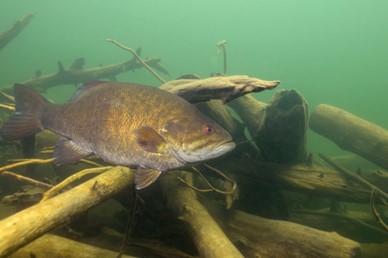
Smallmouth bass will search for food around thick brush, but love current and will often stay in areas of breaks in that current. (Photo Credit: Oxbow lake Association)
Like largemouth bass, smallmouth will also attach themselves to cover, but the way in which they do and the circumstances around it do change slightly. Rather than sitting in that thick brush, they will hunt around it and sit in eddies and areas with unique water features.
Another key to look for is running water. Smallmouth especially love current and will often sit in breaks of that current. This is because flowing water is a constant food source. So, if you can tap into that source with your lure, you are in for some great bites.
Best Times of Day to Fish
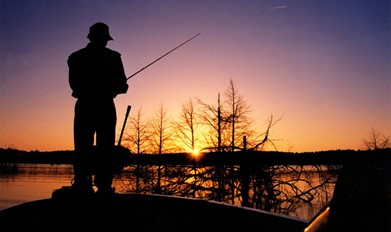
Dawn and dusk are good times to chase both species of bass, but pay attention to fronts that are moving in as well. (Photo Credit: The Oklahoman)
Fishing is a sport that absolutely can take place all day long. However, the bite will probably not be hot that entire time. This all depends on the weather conditions and time of day you are fishing.
Whether it be for smallmouth, largemouth, or anything that will bite your line, it is important to have a strategy for fishing at certain ideal times.
For both of these fish, the dusk and dawn times are when the bites really heat up. In the summer, these are cooler times, so bass will be more active. When they move around more, they are more apt to feed.
Also, read the weather and plan your fishing trip based on that information. If you know a front is moving in at night, that evening can be very active because of pressure changes. So, using the forecast to your advantage is a good idea for both smallmouth and largemouth.
Final Thoughts on Differences Between Smallmouth and Largemouth Bass
Both of these types of bass are super fun to catch, so no matter what you target, or have access to targeting, you are in for a treat. The key to being successful with either one is knowing what you are targeting and how to maximize your hookups.
Use the tips above to differentiate between smallmouth and largemouth. When you have an educated, specified game plan, you can increase your bites and chances of catching a monster!
Good luck, happy fishing, and we hope you put a hook N1!

